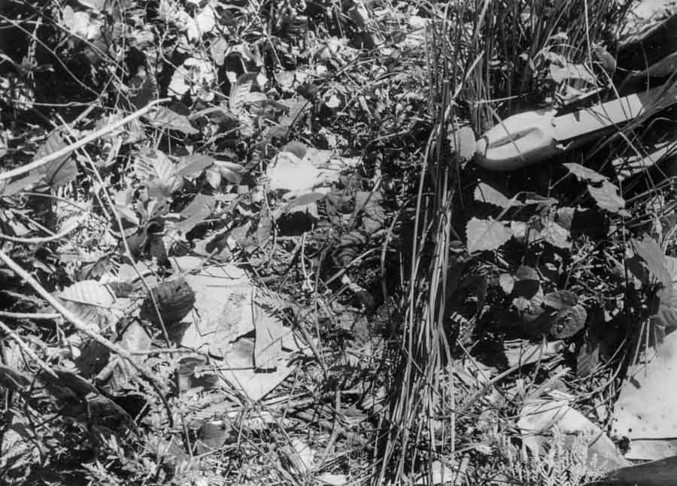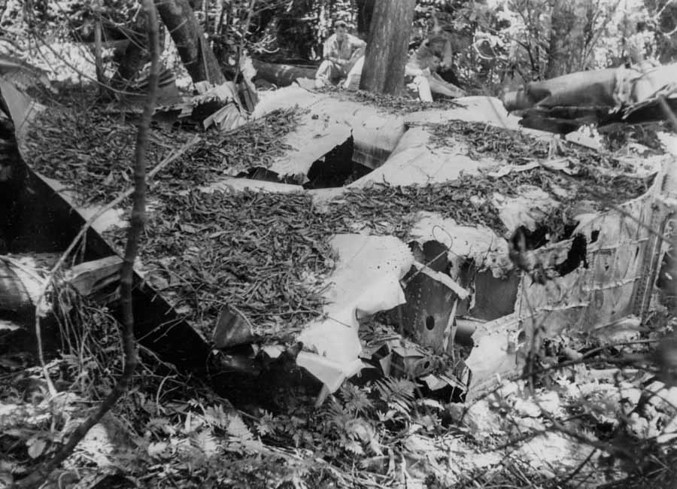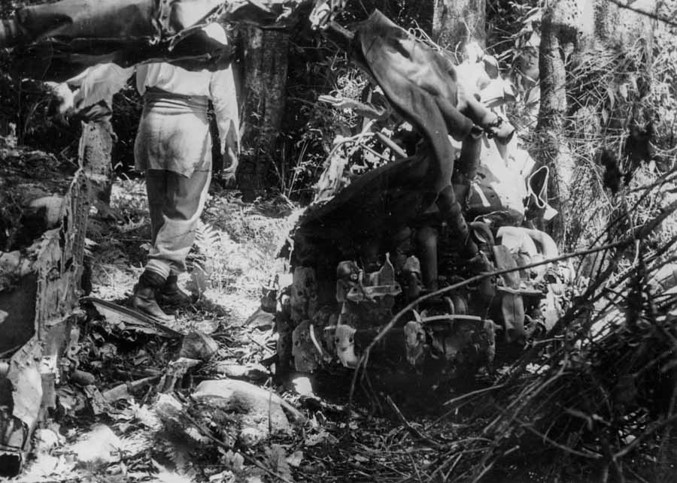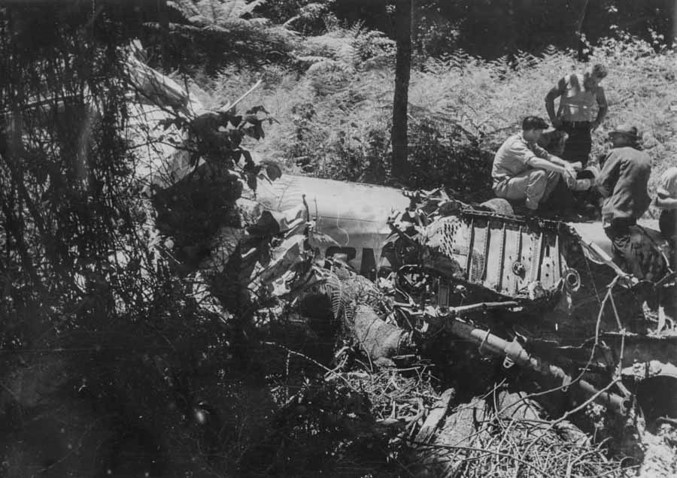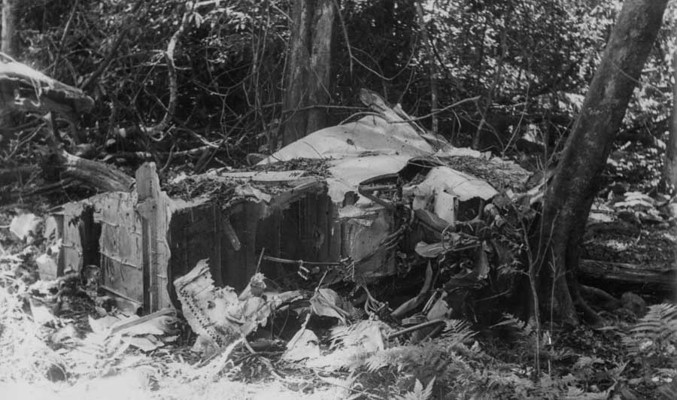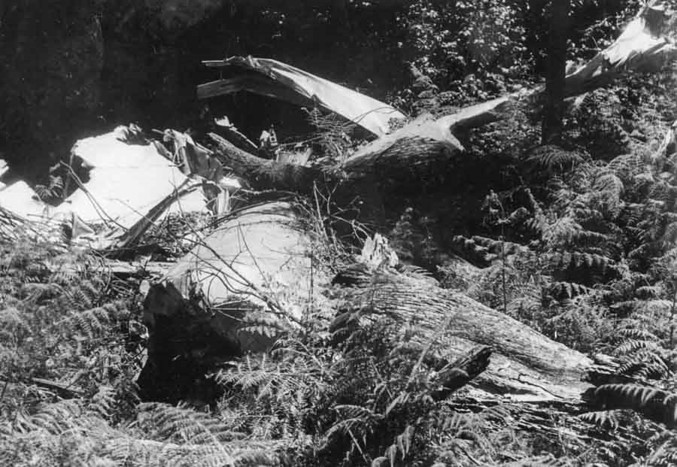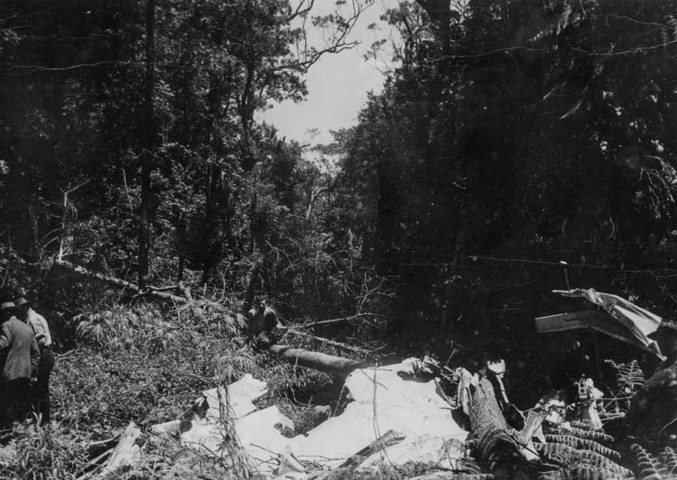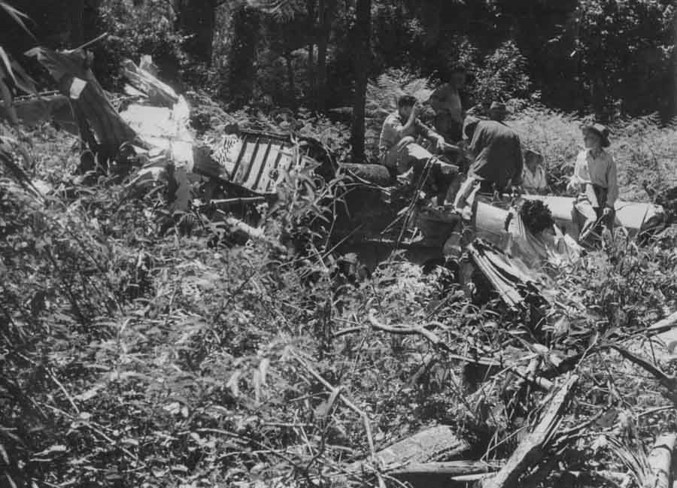
| Vol 69 | Page 16 |
Privacy Policy | Editorial Policy | Profit Policy | Join the Association | List of Members | Contact us | Index | Links
Back Go to page: 1 2 3 4 5 6 7 8 9 10 11 12 13 14 15 16 17 18 19 20 Forward
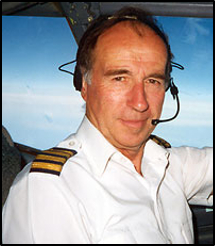
John Laming
Aeroplanes and other stuff.
Contents:
Boeing's 737 Max - when will it fly again
Why not spin an aircraft's wheels prior to landing?
One experience I had of the slow spool up characteristics of those early gas turbines was in 1960, when I had to ferry Group Captain “Spike” Marsh from Laverton to Richmond in a dual seat Vampire Mk.33 where he was to attend a Courts Martial on some unfortunate airman. He was a large man who had some difficulty fitting into the right hand seat. There was much heaving on parachute and ejection seat straps and some un-officer like language as oxygen and radio leads became entangled around his bone dome. The weather was poor all the way to Richmond and wasn’t any better when we got there.
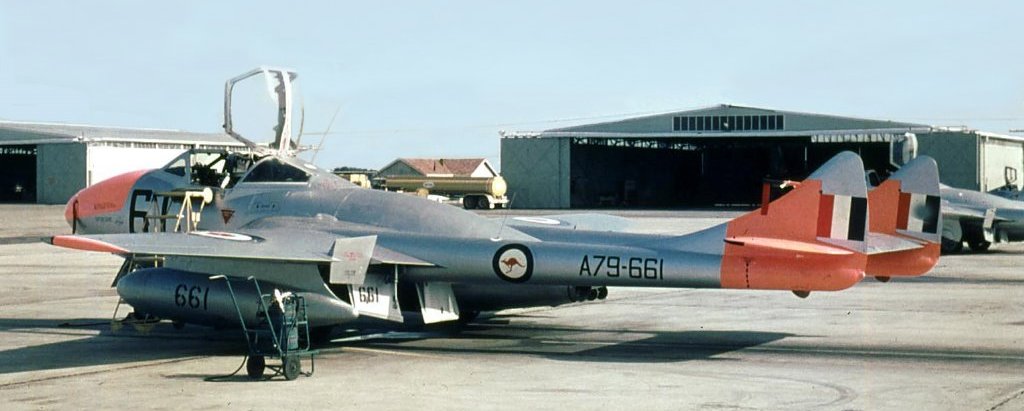
With external fuel tanks fitted under the wings, there was enough fuel to get to Richmond and if necessary using Williamtown as an alternate which would have left us with perhaps 15 minutes fixed reserve. As we climbed through 25,000 ft en route Laverton to Richmond and in heavy cloud, the Spike in the right hand seat clutched his head and complained bitterly of a severe headache. This bitching occurred again in the cruise and I murmured sympathetically. Approaching Canberra at 31,000 ft, I was having my own troubles with precipitation static causing squealing noises on the VHF and rendering the radio compass as useless as the proverbial whatsits on a bull.
The Group Captain was getting very annoyed and testily knocked my hand from the ADF switches whilst shouting at me through the intercom to stop the racket coming through the earphones. Again he complained of a headache and I suspected he might be suffering from lack of oxygen flow. Approaching Richmond, the tower advised us of low cloud and visibility half a mile in heavy rain, but that a Ground Controlled Approach (GCA) to 200 ft was available. I knew that the GCA radar was prone to losing the target due to rain attenuation and decided it would be safer to divert from overhead Richmond at high altitude to arrive at Williamtown with reserves intact. The Group Captain, who had quietened down and was content with mumbling into his oxygen mask, suddenly came to life. He demanded that I attempt the GCA, as he had an important engagement that day. I tried to explain that the weather was bad news and that we could be critically short of fuel if we failed to get in first go.
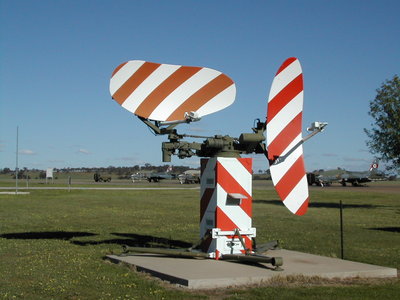
The Group Captain was normally a most pleasant chap to work with, but his irrational manner throughout the flight reminded me of a fighting drunk. I reluctantly went along with his demands and we pitched over from 31,000 ft into a 4000 fpm initial rate of descent. I mentally went over the missed approach procedure as we were guided by GCA on to final approach. At 500 ft, GCA advised that visibility had dropped to under half a mile, with indeterminate cloud base. The missed approach required an immediate left turn through 90 degrees and I remembered that with external tanks fitted, the landing gear had to be selected up without delay otherwise the gear flipper doors would not close. This was because of suction between the gear doors and the curved side of the adjacent external fuel tank.
At 200 ft, the controller gave us a slight heading change and advised that as we were now at the minimums we should look ahead and land visually. He was clearly an optimist because I was unable to see anything due to the heavy rain. The time had come to give it away and exit stage left. As I opened up to climb power, the Group Captain grabbed the control column, closed the throttle, shouting that he had the runway to the right. We went into a high rate of descent, as I realized that what he thought was the runway was actually the long parallel taxyway! At this point I thought bugger this for a joke and pulling aircraft captain rank, firmly told him I had control, "Sir".
Advising ATC that we were diverting, I pushed the throttle fully open and began a left climbing turn, whilst retracting the gear and flaps. The engine took ages to wind up from the idle closed throttle setting that the Group Captain had left me with and there was much loud rumbling and rocketing jet pipe temperatures. The port red gear warning light stayed on, so I adjusted the nose attitude to keep the speed back. It was the first time I had done an overshoot with external tanks fitted, particularly in cloud and with an irate VIP sitting next to me.
I was locked on instruments in a climbing turn, when I became aware of my passenger pushing on the stick and saying "watch the speed man, watch the speed". I pointed out to him through gritted teeth that the bloody flipper was not closing and that I had to keep the speed back to minimize the external tank suction effect. To my relief the red light went out and we soon accelerated to 290 knots as we passed overhead the Richmond NDB en route to Williamtown.
Sydney ATC asked for our ETA at Williamtown and I muttered that I didn't have a clue, just kindly give me an immediate clearance to cruising altitude. As we climbed rapidly through 20,000 ft the Group Captain began his head shaking and again complained of headaches. He had his problems and I had mine, in particular rapidly diminishing fuel contents. Ten minutes later we got our descent clearance and with the fuel gauges hovering near empty we were vectored into yet another high altitude VHF/DF let down. We became visual at 1500 ft and were soon on the runway.
As I taxied towards the tarmac area, the canopy began to mist over with condensation. I was therefore grateful when the Group Captain volunteered to stand up in the cockpit and guide me to the parking spot. He undid his harness and attempted to stand up, only to be dragged back, garrotted by the radio leads attached to his bonedome. His curses were terrible to hear and I silently thanked the Lord that the sound of the RR Goblin engine drowned the muffled sound of my hysterical laughter into my oxygen mask.
On the tarmac and with the engine winding down, I suggested to the Grouper that we could refuel and have another go at getting into Richmond in an hour or so. "No thanks", he said, "I’ll go Civil” meaning he would catch a TAA flight to Sydney and get a train to Richmond. With that we went our separate ways. I didn't blame him one bit. I stayed the night at Williamtown and flew solo back to Laverton next day.
Whilst the oxygen system was being serviced, an engineer found that the passenger side oxygen hose had completely separated from its supply box. During strapping into the small cockpit of the Vampire at Laverton, Spike had inadvertently pulled his oxygen hose from its supply socket. When he tested the mask for correct flow, all he inhaled was fresh air! A less fit man would have been unconscious at our high cruising altitudes, but in this case the effect of anoxia caused only severe headaches and irrational behaviour.
The other day someone told me I could make ice cubes with left-over wine.
I was confused, what is left-over wine?
Plane wreck a monument to a war hero and an ill-starred venture
“Stand by your glasses steady, for each man who takes off and flies. Here’s to the dead already;
three cheers for the next man who dies.”
Toast proposed by British World War 2 aircrew following the death of a comrade.
In the foothills of the Barrington Tops, in NSW, pieces of a wrecked Lockheed Hudson aircraft are a lonely monument to the three men who died in the 1954 crash, including World War 2 bomber pilot Doug Swain DFC.
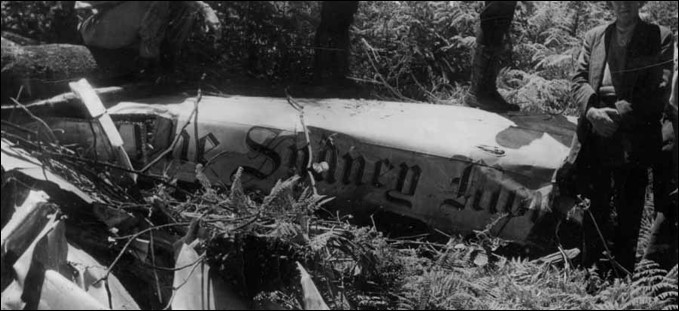
The wreckage is also a monument to a bold, unusual and somewhat ill-starred venture by The Sydney Morning Herald newspaper to boost its post-war circulation by operating its own air deliveries of newspapers to the northern parts of NSW. Sydney Morning Herald Flying Services started in 1947 with ex-air-force planes and cost 10 lives in its six years of operation, making a barely perceptible impact on the masthead’s circulation figures.
According to Gavin Souter’s history of the Fairfax publishing business, A Company of Heralds, the service began in February 1947 and was headed by experienced commercial and wartime pilot Harry Purvis. Purvis was sent to Scotland to buy aircraft and found two near-new ex-Royal Air Force DC3s. A few months later the service bought three surplus Hudson bombers from the RAAF at rock-bottom prices. The service was based at Macquarie Grove, a wartime aerodrome near Camden and the planes took off before dawn, either landing at airstrips to drop off the bundles of newspapers or dropping them on specially prepared drop zones. Souter wrote that the dropped bundles usually bounced four times and once a bundle knocked a policeman off his bicycle near Grafton.
The bundles were wrapped in hessian and then either dropped through a chute cut into the bottom of the aft fuselage of the Hudson or slid off a hinged platform through the rear open cargo door of the DC3. In both cases the co-pilot would be down the rear of the aircraft to operate the chute in the Hudson or to physically lift the platform in the DC3 so the bundles would slide down the inclined platform into the slipstream. For the DC3 the co-pilot would tie himself to the airframe to minimise the chances of him falling overboard in turbulence
Many of the pilots and crew members were former air force men, as were most of the ground crews. See my earlier story HERE.
The service’s first fatal accident happened in its eighth month when Hudson VH-SMJ crashed near Muswellbrook while on a trial dropping flight, killing pilot John Hoskins and second pilot Edwin Conner. It was discovered that when the co-pilot was at the rear of the aircraft during the turn toward the drop-zone, the centre of gravity of the Hudson went beyond the aft limit, causing the Hudson to stall. At that low altitude, there was insufficient room to recover.
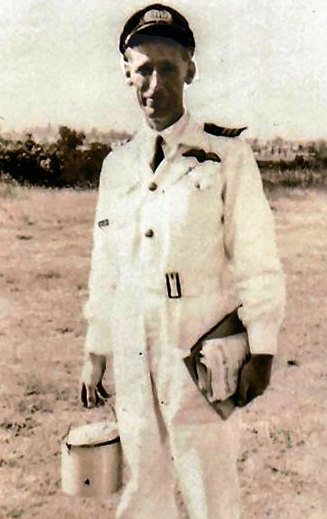
On New Year’s Day, 1950, another Hudson (VH-SMK) crashed shortly after taking off from Camden, killing pilot Dick Cruickshanks and co-pilot Bruce Purvis (nephew of the service’s manager, Harry Purvis).
On October 12, 1950, the service’s flagship DC3, VH-SMH) crashed at Bungulla, south of Tenterfield, killing pilot R.F. Hartnell and co-pilot B.K. Cridge.
Another fatality occurred when a cleaner, Tony Pinner, was hit by the propeller of a DC3 in a hangar at Camden and killed instantly.
By 1952, Fairfax shut the air delivery service down, mostly for economic reasons. Harry Purvis had resigned and Doug Swain (right) was moved to a desk job – which he hated. At 35, he appeared to feel his career was over and he pushed Fairfax to restart the service. The company agreed, and Hudson VH-SML was put into service to deliver copies of the afternoon Sun newspaper to northern NSW.
Tragically, the plane crashed on the first delivery flight on September 14, 1954. Apart from the pilot, the Hudson was carrying first officer Alistair S. Cole-Milne and a passenger, David C. Burns. According to Souter: “Swain took off from Mascot at 2pm bound for Taree, Kempsey, Armidale, Glen Innes and Tamworth. There was a positioning signal from him near West Maitland, then silence.” Newspaper reports at the time said the signal came from Belford, between Greta and Singleton, at 2.37pm. The Hudson was not approved for flying in bad weather and the crash probably occurred due to Captain Swain trying to keep below cloud in mountainous country.
Two Grafton airmen, Garth Monroe and William Wetherton, who were flying from Newcastle to Tamworth at the time, reported seeing a Hudson circling at 2500 feet, west of Scone, about 4pm. A Singleton schoolteacher said he saw a plane resembling a Hudson flying low over the town at 5.45pm, and Henry Martin, of Branxton, saw a plane flying low over Belford at 6pm.
A search failed to find the plane and the searchers eventually gave up. Then, 15 months after it had disappeared, at 11.10am on the 22nd December, 1956, two Butler Air Transport pilots, Captain Bill Jenkins and L. Beales, spotted the wrecked plane about 10km north of Chichester Dam. Captain Jenkins saw something glinting in the sunlight and circled the site before confirming that it was the wreckage of a Hudson. The plane had crashed about 6m from the top of a hill at the foot of the Barrington Ranges. Coincidentally, Bill Jenkins was a former colleague of Doug Swain at the Herald Flying Service.
A Lockheed Hudson in (USAF) wartime livery.
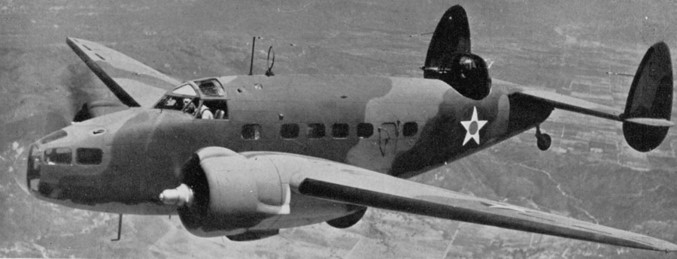
Doug Swain’s death ended an illustrious flying career. In the Royal Air Force during World War 2, he and his navigator, Mike Bayon, had flown more than 50 missions in Mosquito bombers as part of the elite pathfinder group. Both men earned the Distinguished Flying Cross for their efforts. He retained some of his wartime daring and displayed it at times in his newspaper delivery job. When he was flying the Dakota, Doug Swain would drop a single rolled-up Sydney Morning Herald to some friendly farmers who lived on country properties among the mountains near Tamworth. He would circle the house then drop half-flap, reduce the airspeed to 95 knots and come in low over the farmer’s house. The co-pilot would slide open the starboard window and on the order from Doug, throw the paper down inside the arc of the starboard propeller. In return, boxes of fruit would be waiting each week at Tamworth aerodrome as a gesture of thanks from the farmer. Back at Camden, Doug would give the apples and oranges to the ground staff. It was a happy arrangement,
A year before his fatal crash, Doug Swain had been co-pilot aboard a Mosquito aircraft on a flight from Australia to England to take part in the London to Christchurch Air Race. The pilot was Aubrey “Titus” Oates DFC. The plane struck monsoon weather in the Bay of Bengal and was forced to ditch. Both men were rescued unharmed.
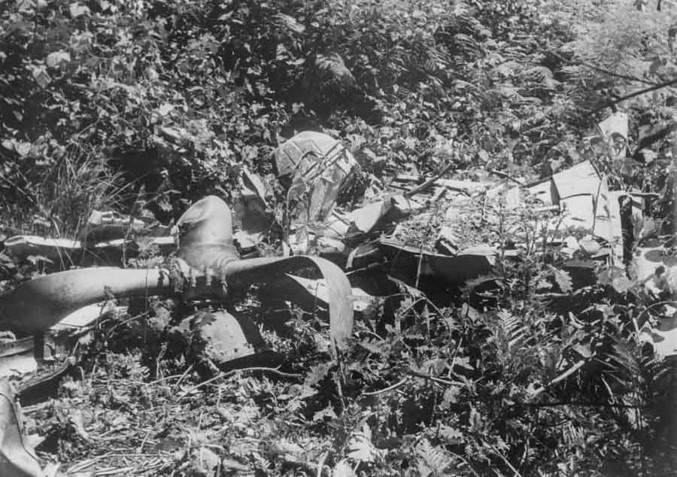
Wreckage of the Hudson after its discovery in 1956.
When news of the discovery of Swain’s wrecked Hudson broke in 1956, Oates flew his own Tiger Moth to the area and landed on a ridge 10km from the crash site. Next day he helped police find the wreckage by circling in his plane. A police party led by Inspector W.L. Jefferson, of Maitland, reached the scene from Dungog about noon on the 23rd December 1956.
Click the pics above for larger views.
Hercs doing things Hercs weren’t meant to do.
Barrie Wallis
23 September 1966
My fourth flight “solo” as a fully qualified Flight Engineer with No 36 Squadron at Richmond, flying on an A model “Hercules”. It was an afternoon training flight and was planned for two 2:00 hour sessions starting with a 1300 Hrs take off.
The crew were: -
| Captain | Flt Lt Bruce Clarke Q.F.I – I.R.E | |
| Co-Pilot (Conversion training) | Flt Lt Arch Streeter | |
| Flight engineer | Sgt Barrie Wallis | |
| Loadmaster | Sgt Les Wells | |
| The aircraft was | RAAF Hercules A97-207 |
It was proposed that after the first 2Hr training session the pilots would change over, with engines running and the second session would carry the same S.N.C.O’s. We were planned to take off at 1300 Hrs so the Loadie and I preflighted the aircraft and when the pilots arrived we were briefed by Flt Lt Clarke as to the content of the training mission. He said that we would be going out to the training area to the North West and demonstrate and practice “Stalls”, both clean then dirty.
We were the only aircraft in the training area at that time on that day so, B.C. said we were planned to do these stalls at 5,000 ft AGL over the Blue Mountains, however for this session we would go up to 15,000 ft to save time, and after recovery from the last stall we would carry out a practice medium level ADF approach. All done we “started and departed” and in transit to the training area Les secured the cargo compartment of loose articles that could become missiles during the stalls.
Almost to the training area BC called Les and checked the condition of his domain, and when told all was ready, BC told Les to come forward and strap into the vacant Navigator seat for the practice stalls. The layout in this session was Arch Streeter (who was on a conversion course) was occupying the left hand normal Captains position and the Co Pilots seat was occupied by Bruce Clarke. When the Flight Deck was also made secure we started our first stall, a simple “clean” stall which was demonstrated and an effective recovery carried out. During the stall Bruce Clarke demonstrated that when in the stall even though the aircraft was normally stable, very little lateral control was available however on the application of power the aircraft would actually climb out of the stall if necessary.
During the next stall Bruce Clarke entered the stall by closing all throttles to the Flight Idle position and raised the nose. When in the stall which was charted to occur at 95Kts, Bruce Clarke demonstrated the absence of lateral control by rolling the ailerons from full left to full right without the aircraft responding and when the speed decreasing past the stall figure Bruce Clarke said that the longer the aircraft is left in the stall the buffet gets worse and all control is lost. Just past this point the aircraft rolled to the Left and Bruce Clarke attempted to pick up the dropping wing, but with no lateral control the aircraft rolled to 930 onto its back and entered a spin.
At this point Bruce Clarke announced that we had rolled into a spin and he had taken standard recovery action. So we went down and during that spin, after what seemed an eternity Bruce said that the aircraft was not responding but standard recovery action held on. Again after what was a lifetime to us new members, the aircraft responded and the spin stopped, Bruce said we were out of that but now we have to get it on the ground. I carried out a visual inspection from the cargo compartment but nothing was out of the ordinary much to my surprise. We made a speedy return to Richmond and once on the ground logged the aircraft in for a high “G” inspection. At the bottom of the spin at the pull out which was between 7000 and 8000 ft we pulled 3.2 positive “G”.
Next came the investigation as to why a normally docile and well-mannered C-130A would spin. After all the evidence was put together no defect could be blamed, however the mechanics of the Hercules was partly the cause aggravated by humans. To explain this further one has to come to grips with a constant speed Turbo Prop engine. It always runs at the same speed however, to make it function correctly, by adding more fuel to the engine the system will increase propeller pitch rather than increase RPM which is governed and so cause more work to be done, consequently when the fuel flow is reduced to the Flight Idle position the propeller pitch will decrease towards the zero position and stay there. Now with four engines the Flight Idle position in relation to the blade angle was not the same, so that at Flight Idle there were four different power settings.
Next at the Flight Idle position if the fuel is low, this can cause the propeller pitch to decrease below zero degrees and become negative. Obviously, this is not a desirable thing to happen so when the “Negative Torque” reaches a set figure the mechanical (NTS) system will physically attempt to increase pitch and thus hold it at a predetermined value, this being -1400 Inch Pounds of Torque. So now to put this knowledge into our docile C-130A.
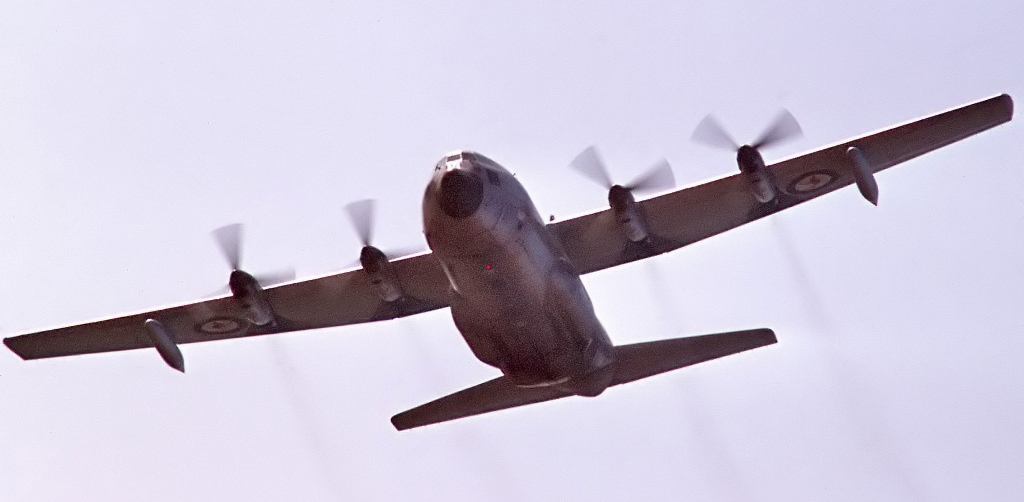
In the air when starting to practice the stalls, the four throttles were pulled back to Flight Idle and in this case engines 3 and 4 on the right hand side remained in positive thrust, just how much I cannot remember, then engines 1 and 2 on the left hand side were producing Negative thrust just above the N.T.S. system activation. Now in the air as the speed decreased the stall started and as it was held there we lost aileron control, then a short time later engines 3 and 4 which were producing positive thrust attempted to accelerate that wing, thus producing lift, while engines 1 and 2 were in Negative thrust and attempting to decelerate that wing, thus creating drag. It naturally followed that without aileron control and differential thrust there was only one situation that would occur, and it did.
One outcome was to then make a Standard Operating Procedure requiring that BEFORE entering stalls when the power was reduced to Flight Idle a power asymmetry check was carried out and all engine outputs were aligned.
The aircraft involved in this incident was A97-207 and at the end of the inspection it was found that several rivets on the upper surface of the left hand horizontal stabilizer had popped and there was speculation that these had popped some time prior to the stalls anyway, nothing else. The aircraft was given a clean bill of health and from that moment onwards it never flew straight again without cross trimming.
I never flew in 207 for another six months but do remember its flying characteristics well.
Unfortunately, Bruce is no longer with us.
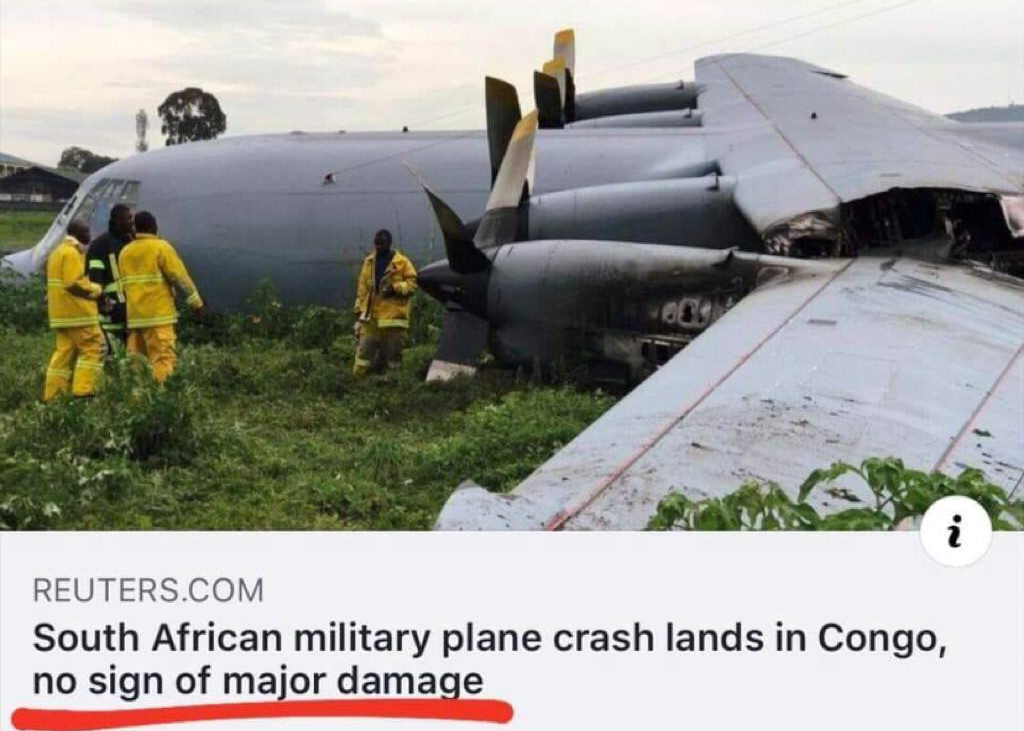
Wine improves with age – the older I get the better I like it.
The Avro Lancaster in all its Glory.
The Avro Lancaster bomber first came into service in March 1942 and, as the main RAF heavy bomber, soon became as iconic a part of the British air war as the Supermarine Spitfire.
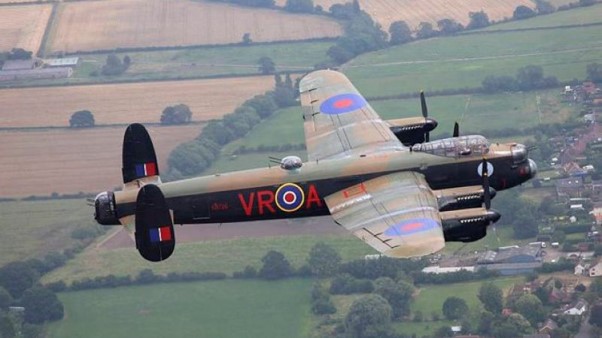
The aircraft was 69 feet 4 inches long (21.11 metres), 102 ft wide (31.09 m) and 20 ft 6 in height (6.25 m). According to BAE System's heritage page on the Lancaster bomber, entitled 'Avro 683 Lancaster', it could reach speeds of up to 282 mph (454 km/h) at a weight of 63,000 lb on its four Rolls-Royce Merlin V12 engines. (Although this varied by altitude, and these figures are for the Lancaster I - weights varied with later models).
There were 15 different versions of the aircraft besides the 683 base model. It had an impressive lifting capacity, weighing 36,900 lb empty (or 16,738 kg), it was able to haul an additional 33,100 lb (or 15,014 kg) in fuel and bombs. It had a long, unobstructed bomb bay that allowed it to carry the RAF's largest bombs, up to and including the 12,000 lb (5,400 kg) blockbusters, one of which could destroy an entire street or large building.
The impressive bomb hauling capacity meant that Lancasters could be modified to carry the bouncing bombs used in Operation Chastise (the 'Dambusters' raid) against the Ruhr Valley dams. In fact, later on, the Lancaster was able to haul the 22,000-lb Grand Slam Earthquake bomb.
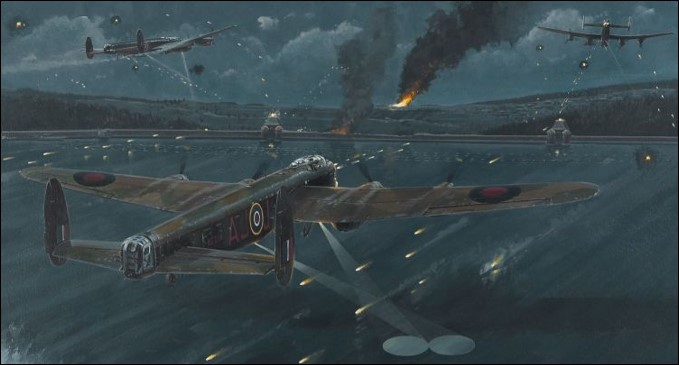
Air Marshal Arthur 'Bomber' Harris may have stepped up the bombing campaign against Germany with his first "1,000 bomber raid" against Cologne in May, 1942, but he couldn't sustain assaults on this scale. Britain was only able to produce 7,377 Lancasters during the war, at a cost of £45,000 to £50,000 each (around £2 million today.)
The Lancaster design was an improvement upon the twin-engined Avro Manchester bomber. The two Vulture engines in the Manchester were switched out for four Merlin ones and production, for the most part, was done in Lancashire before final assembly in Cheshire. Lancaster is the county town for Lancashire and the name of the aircraft derives from there.
According to the Bomber Command Museum, over half of the Lancasters produced, 3,932 of them, were shot down during the war, at a total cost of £186,770,000 (or £7,397,375,152 when adjusted for inflation). Infinitely worse than the material cost was the scale of human loss. The Royal Air Force Benevolent Fund lists 55,573 men as having died serving with Bomber Command during the war. Many were from Britain, but men - mostly in their late teens - also came from Commonwealth countries and included those who'd escaped from Nazi occupation in Poland, France, and Czechoslovakia.
This is more people than all the personnel who serve in the whole of the RAF today.
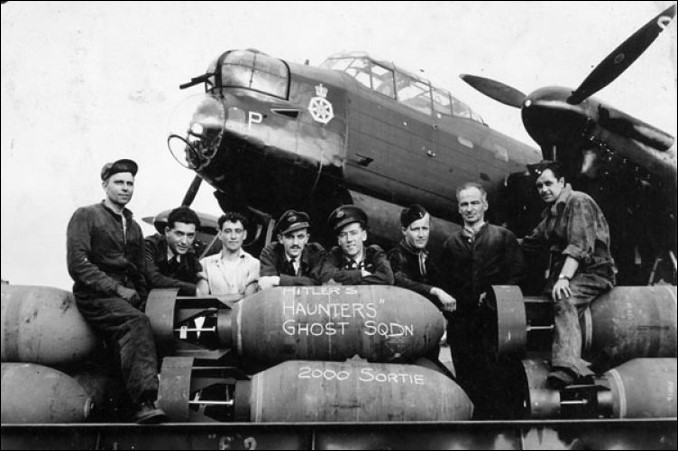
The most famous Lancaster bomber mission was undertaken by 617 Squadron against the Ruhr Valley in Germany and was officially dubbed 'Operation Chastise'. The Dambusters, as crews then did without modern computerised equipment and had to navigate using maps, compasses, pencils and rulers, flying in a World War 2 sortie was akin to taking "a seven-hour maths exam in the dark while being shot at". These difficulties were intrinsic to all bombing missions, though, for the pilots of Operation Chastise, the Dambusters raid had the additional challenge of having to be flown a mere 100 feet off the ground to avoid radar.
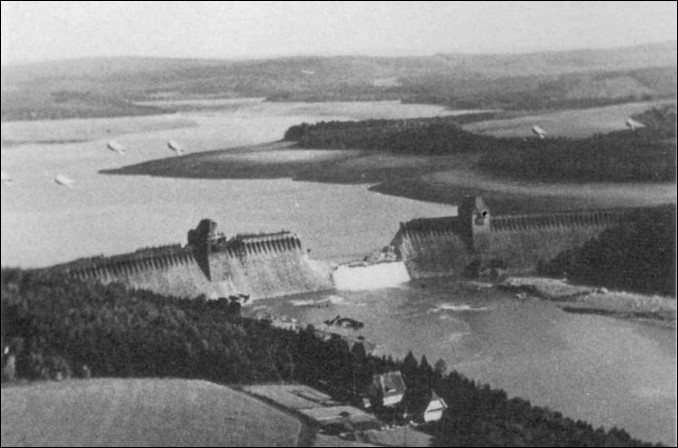
Unlike its American counterpart, the B-17G, which bristled with an
impressive 13 .50-caliber machine guns, the Lancaster only had 10 such
guns, in three sets of twin-gun turrets located on the belly (ventral
guns), on top (dorsal guns), and in the nose and a set of four guns in
the tail. These wer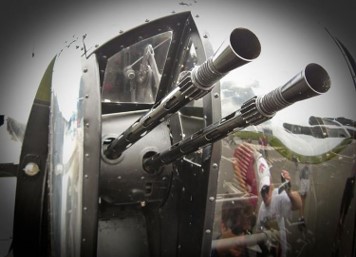 e
M1919 Browning machine guns with 1000 rounds each, or enough for roughly
two minutes of continuous firing.
e
M1919 Browning machine guns with 1000 rounds each, or enough for roughly
two minutes of continuous firing.
Lancasters were also crewed by fewer men than the 10-man B-17s. A pilot and flight engineer would be in the cockpit, with the bomb-aimer on his stomach in the compartment underneath them, aiming and releasing bombs as well as the front machine-gun. Tucked behind the pilot and flight engineer was the navigator and near him was the wireless operator, who also fired the dorsal guns when necessary. Rounding out the 7-man crew were the ventral and rear gunners at the back of the plane.
Conditions were tough. The impressive haulage capacity meant a trade off in armour plating, so crews were vulnerable to enemy fire, and the cold.
At 20,000 feet, temperatures inside the cramped aircraft could plummet to minus 40, potentially leading to frostbite.
Today there are only 17 surviving Lancaster bombers in the world, but only two of them are able to fly.
Wine – cheaper than botox and paralyses more muscles.

Boeing 737 Max – will it fly again?
As it has been 12 months since the Boeing 737 MAX was grounded worldwide, the question remains; when will the aircraft fly again? After two fatal crashes saw the plane grounded by regulators across the globe, airlines operating or have Boeing’s ground-breaking aircraft on order, began to wonder.
Boeing have been working flat out on a software fix and although it has been submitted to the authorities, don’t expect to see the aircraft carrying passengers soon.
Someone who should know when and if the aircraft will be returned to service is Petter Hornfedt, a 35 year old Swedish born Training Captain and Type-rating instructor/examiner on the Boeing 737-800 with Ryanair. Petter is also rated on the A330, B747-400, B747, B757, B737 and the B727.
Click the pic below to see his view.
The Boeing 747 supertanker is one of several aerial fire-fighting air-tankers derived from various Boeing 747 models. The aircraft are rated to carry up to 74,000 litres of fire retardant or water and are the largest aerial fire-fighting aircraft in the world.
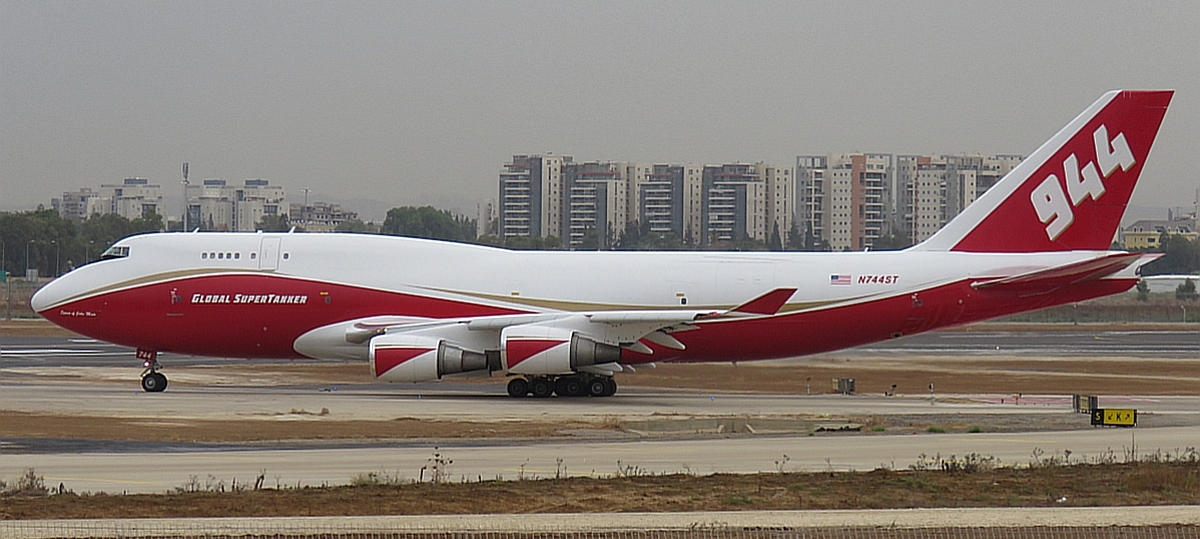
Initially developed by US based Evergreen International Aviation, the first supertanker was based on a 747-200 but never entered service. The second supertanker was based on a 747-100 originally manufactured by Boeing in 1971 for delta air lines. It entered service for the first time in 2009, fighting a fire in Cuenca, Spain and made its first American operation on the 31st August, 2009 at the Oak Glen fire in California. It is no longer in service. The third 747 supertanker was developed by global supertanker services which acquired most of Evergreen's assets after Evergreen ceased all aviation-related operations in 2013 due to financial challenges.
The current global supertanker is a Boeing 747-400 dubbed the spirit of John Muir. it was certified for firefighting flights by the federal aviation administration in September 2016 and fought fires in Chile and Israel before being contracted by US officials to fight California wildfires in 2017. It also took part in firefighting in Bolivia in august 2019.
Click the pic below,
Aircraft tyres, why don’t they spin them prior to landing.
When you see an aircraft land, you always see big puffs of smoke when the wheels hit the ground, this must put a lot of stress on the tyres and surely wear them out. You’d wonder why someone hasn’t designed a landing wheel with a fin or fins on it so that the air will start the wheels turning before the wheels touch the ground? Surely if they did that the tyres would last longer, wouldn’t they?
Once again, Petter Hornfedt has the answer, see below.
Sunday 8th March 2020
Tyabb is a small town of about 3500 people situated not far from HMAS Cerberus, on Western Port Bay in Victoria. Every second year the Peninsula Aero Club, which owns the Tyabb Air Field, holds an airshow. The show starts at 11.00am and concludes at 4.00pm.
Tickets cost:
| Adults (15 years +) | $50 | ||
| DVA Concession holders | $45 | ||
| Kids <15 | $10 | ||
| Families | $110 | ||
| Kids <5 | Free |
Click HERE to see video of the event and click the pic below to see the RAAF’s C17 doing an overfly.
An Irish painter named Murphy, while not a brilliant scholar, was a gifted portrait artist. Over a short number of years, his fame grew and soon people from all over Ireland were coming to the town of Miltown in County Clare to get him to paint their likenesses. One day, a beautiful young English woman arrived at his house in a stretch limo and asked if he would paint her in the nude. This being the first time anyone had made such a request he was a bit perturbed, particularly when the woman told him that money was no object; in fact, she was willing to pay up to 10,000 pounds.
Not wanting to get into any marital strife, he asked her to wait while he went into the house to confer with Mary, his wife. The couple talked much about the rightness and wrongness of it. It was hard to make the decision but finally his wife agreed, on one condition. He returned and said, "T'would be me pleasure to paint yer portrait, missus," he said, "and the wife says it's okay. I'll paint you in the nude all right - but I have to at least leave me socks on so I have a place to wipe me brushes."
Back Go to page: 1 2 3 4 5 6 7 8 9 10 11 12 13 14 15 16 17 18 19 20 Forward
